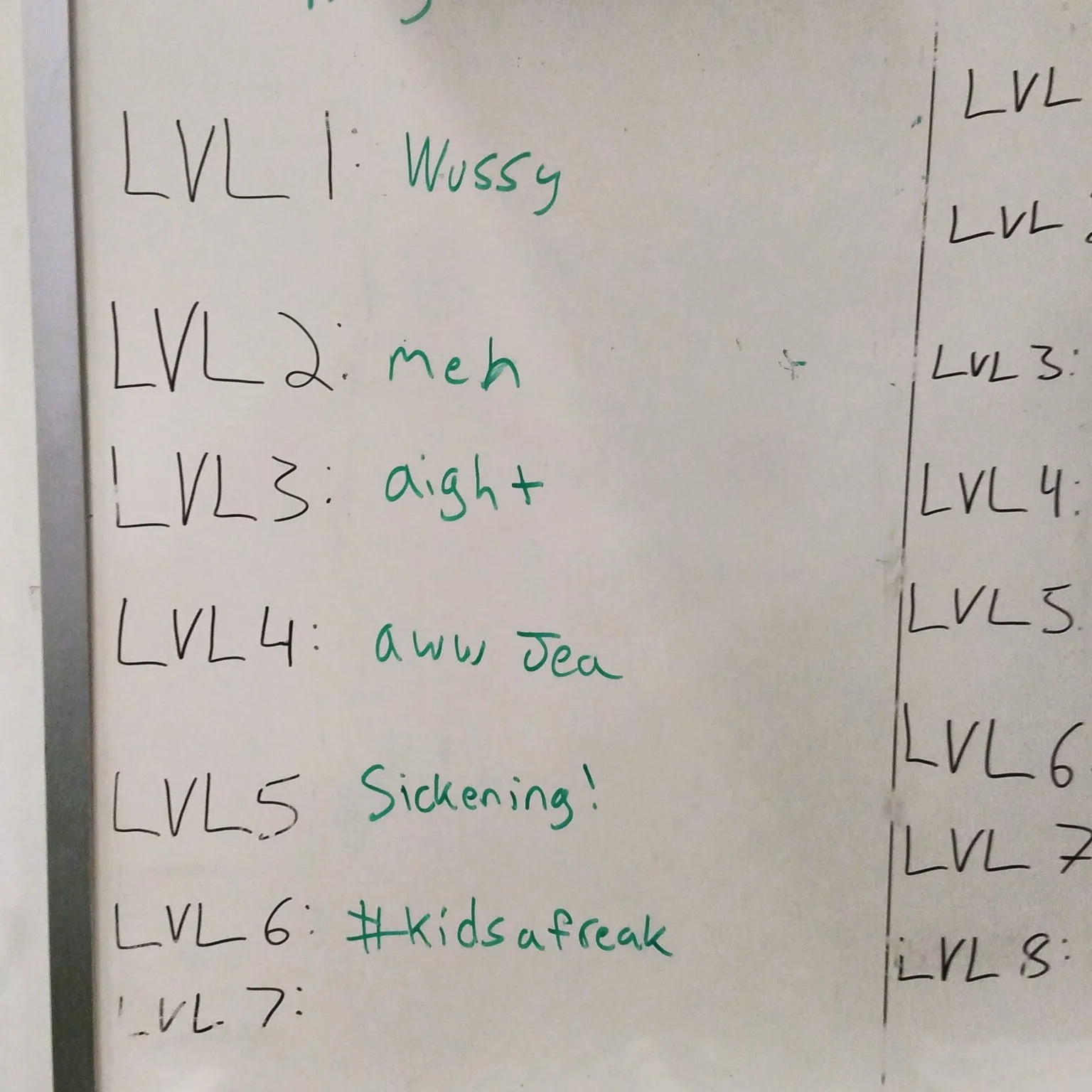AHAP. It’s an acronym you will see a lot of if you peruse through our client programs. Most of our programming at Arkitect is percentage based. Of course there are some exercises you don’t have a one rep max to base a percentage off of. For example, we don’t test a 1 rep max barbell bicep curl, or banded tricep pushdown. In these instances, we give the client some discretion and allow them to pick their own weight. For some people this works very well, for others, they struggle to choose an appropriate weight for the given exercise. Hopefully this article will lay out some guidelines to help our clients (and YOU the reader) to get the most out of your training when there isn’t a specific weight prescribed.
The “R” is Silent
There should be an additional letter in the acronym AHAP: R, which would stand for “reasonably.” Meaning, when you see AHAP prescribed, you should choose a weight that is challenging, but manageable. For example, if you’re performing 3 sets of 10 on shoulder raises, you should choose a weight that you really have to push to complete the work on your last few reps of your last set, not a weight that’s a struggle on your first 5 reps of your very first set. In training it’s always important to have “margin.” Proper training is about progressive overload, basically meaning you do a little more this time than you did last time. If you’re constantly working at your ceiling, that leaves you no where to go next week. If 20lbs on those shoulder raises was impossible, 15 will very hard, and 12 will be doable, but still enough to elicit change. That’s what we’re going for. This can be a bit of a guessing game. That’s why it’s important to start conservative. It’s always better for a client to go a little lighter, get comfortable with the exercise, build good motor patterns and habits, and then you’ll have a jumping off point to really dial up the intensity the next time that exercise pops up in your program. This is also a great illustration of why tracking what you do is so important
The Milo Myth
There’s a famous story in Greek mythology about Milo, a wrestler, who had a baby cow who he would pick up and carry every day. As the cow gradually grew, Milo became stronger and stronger from lifting the ever heavier weight. The moral of the story is to demonstrate that slow and gradual progress (progressive overload) will yield great results. While it’s a great story, and a solid point, unfortunately adaptation is not a linear process. That means this week you may be able to lift 100lbs, but next week only 85. That’s just the way life is. Often my clients feel like they need to continually put more weight on the bar. This couldn’t be further from the truth. We value strength training here because of its nearly endless list of benefits, but that doesn’t mean everyone’s goal should be to lift as much weight as possible. In fact, if you use the same weight this week as you did the week before, you can still get stronger. At times we are slaves to the equipment we have available to us. Going back to the example of a shoulder raise, let’s say you did 10lbs last week, and the next biggest dumbbell you have is a 15lb. A 5lb increase can be a lot for a disadvantaged movement like a shoulder raise, where the shoulders are working mostly in isolation. Also consider that this is a 50% increase in weight. That matters. You can tell when an exercise is challenging your limits. It will require focus, proper technique, and will fatigue you to some degree. These are the markers you should use when selecting a weight.
Technique>Load
There’s not much else to say about this one. If you have to fundamentally change your body position or movement pattern to “complete” a rep, it’s too heavy. A great example of this is “half-kipping” pull-ups, in which an athlete begins to struggle so they kick their legs to gain momentum. Unfortunately these reps don’t make you any stronger. Why? Well, let’s ask ourselves a question. What is the point of a pull-up? It’s for the arms to go from an extended and abducted position to a flexed and adducted position while under load. When you kick your legs you’re creating momentum, thus taking the load off of the arms and back muscles, this defeats the point of the exercise. Think of it in another context: Imagine you were going for a new personal best on back squats, and you began to struggle half way up, so a training partner pulled some weights off of the bar, and when you stood all the way up, they put the weights back on the bar. Would you tell people you just set a new personal best?
Side note: how’s the technique here?
It begs the question, what do you do if the weight you chose is too heavy? It happens. You’re not going to get it right all the time. You may be midway through a set, and realize “sh*t, I’m not going to make it.” So what do you do? You have a couple of options, but before we discuss those, let’s make one thing clear…bending, twists, hucking, etc… is NOT an option. If the form isn’t spot on, it’s not worth doing. What you can do is either
A)Break the exercise into more sets and less reps per set or
B)Decrease the weight
The first option may be better suited if you can perform a 50% or more of the prescribed reps per set with good form. The latter is the better option when it’s a struggle right off the bat. Another factor to consider is that not all sets need to be done at the same weight. There is no law stating that you can’t peform your first set with a higher weight and then decrease for the subsequent sets as you begin to fatigue. In fact that is a great way to leap-frog to bigger weights over time. For example if this week you perform your first set with 20lbs, and then next two sets with 15lbs, then next week you could try to perform your first two sets with 20lbs, and the last set with 15lbs, and then eventually all three sets at the higher weight. Remember the goal is to get stronger, not to lift the most weight. It may seem like those are the same thing, but it’s not. We get stronger by properly loading a muscle through a full range of motion. If the load is too heavy and we have to change the technique, we are deloading the muscles we are trying to train, and improperly loading the muscles that are being called upon to help us cheat, which is, dangerous. A great example of this is when people struggle with a front squat, and they lean forward. The legs, which are the primary muscles being trained, aren’t strong enough to drive the weight up, thus the athlete shifts forward, now loading the low back instead. Not only is this not making our legs stronger, it’s also putting improper stress on our back, because there are better and safer ways to train our low back, such as deadlift variations and rows. You can see in the video below, Gunnar’s weight shifts slightly forward, which does happen from time to time when you’re pushing the limits
Up until this point we’ve been talking mostly in the context of sets containing lots of reps. “As heavy as possible” is used in the context of “maxing out” as well, as Gunnar was doing in the video above. He didn’t try a heavier weight after that set. Could he have? Possibly. Would it have been worth it? No. He had already set a new personal best, he was clearly approaching his limit weight, and we prefer to have athletes and clients finish on a “make” rather than a “miss” so it was not worth it to have him try more.
Leave Your Ego at the Door
It’s been said thousands of times likely by thousands of coaches and trainers, but it’s worth saying again. Doing it right will lead to better results. Don’t try to cut corners to feed your ego. If you’re struggling, put that weight back on the rack and grab a lighter one. This goes for situations where your coach leaves the weight choice up to you, but also when we prescribe a certain weight. We don’t always get it right either. Every weight on your program is an educated guess, and good coaches know when to call an audible and make a change during a session. Just because it was written on that paper doesn’t mean it’s set in stone. This is just another reason tracking what you do is extremely important. It’s very hard to improve upon last time, if you have no idea what happened last time. Did you struggle to finish all of your prescribed reps? Did you decrease your weight? Did you increase your weight? Write it down!
That is the biggest difference between a program written for YOU vs. a generic workout out of a magazine, or a general workout in a fitness class or “WOD.” If you’re interested in learning more about the personalized programming we do here, contact us today to schedule your FREE assessment!




